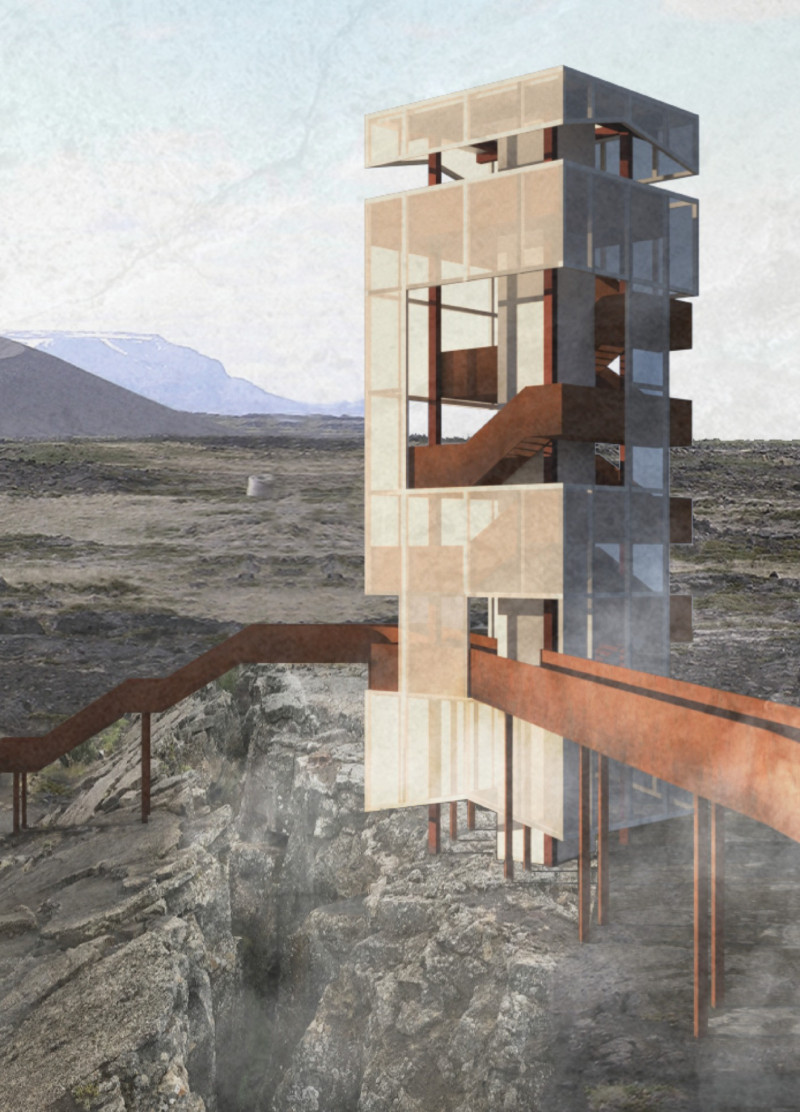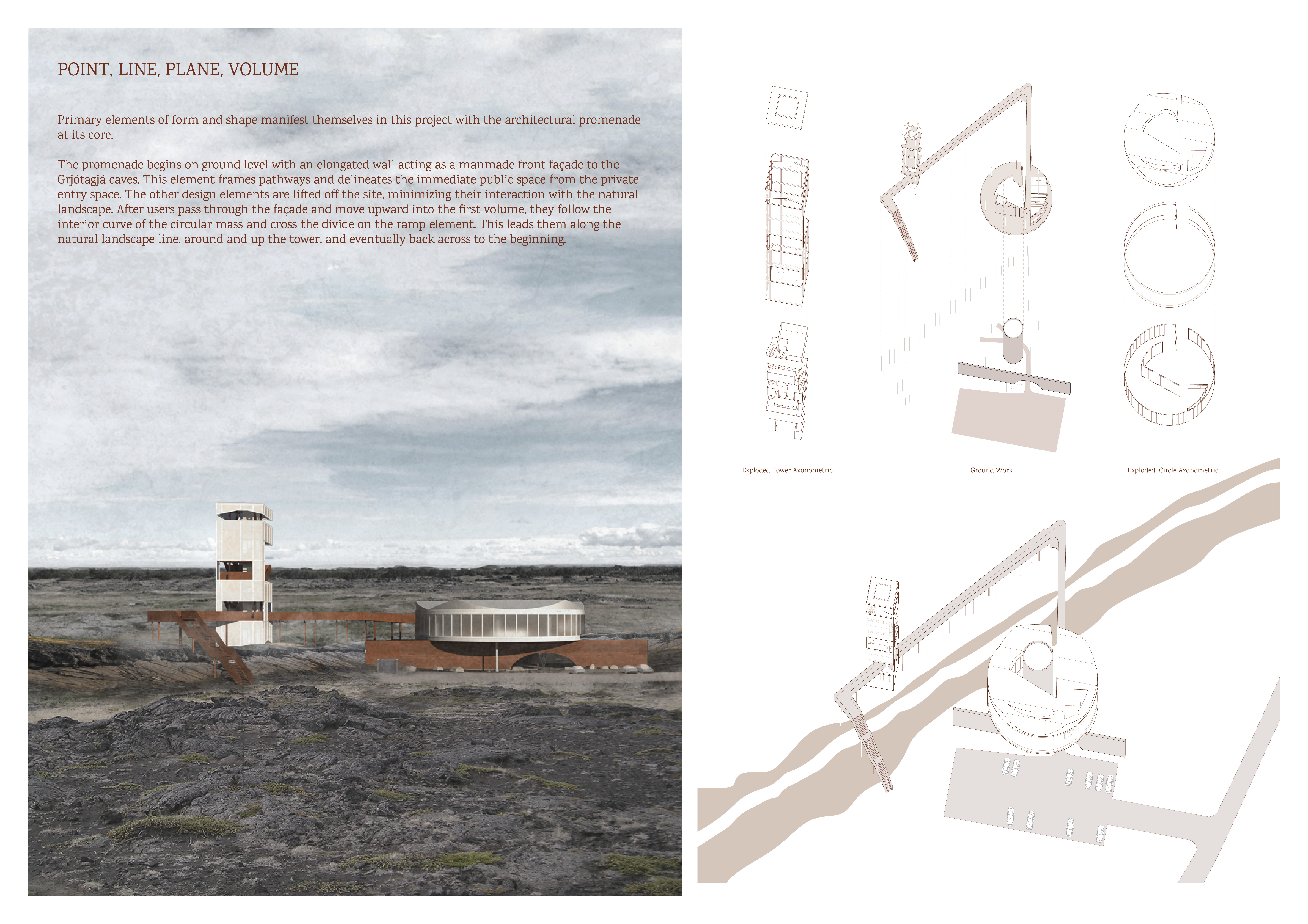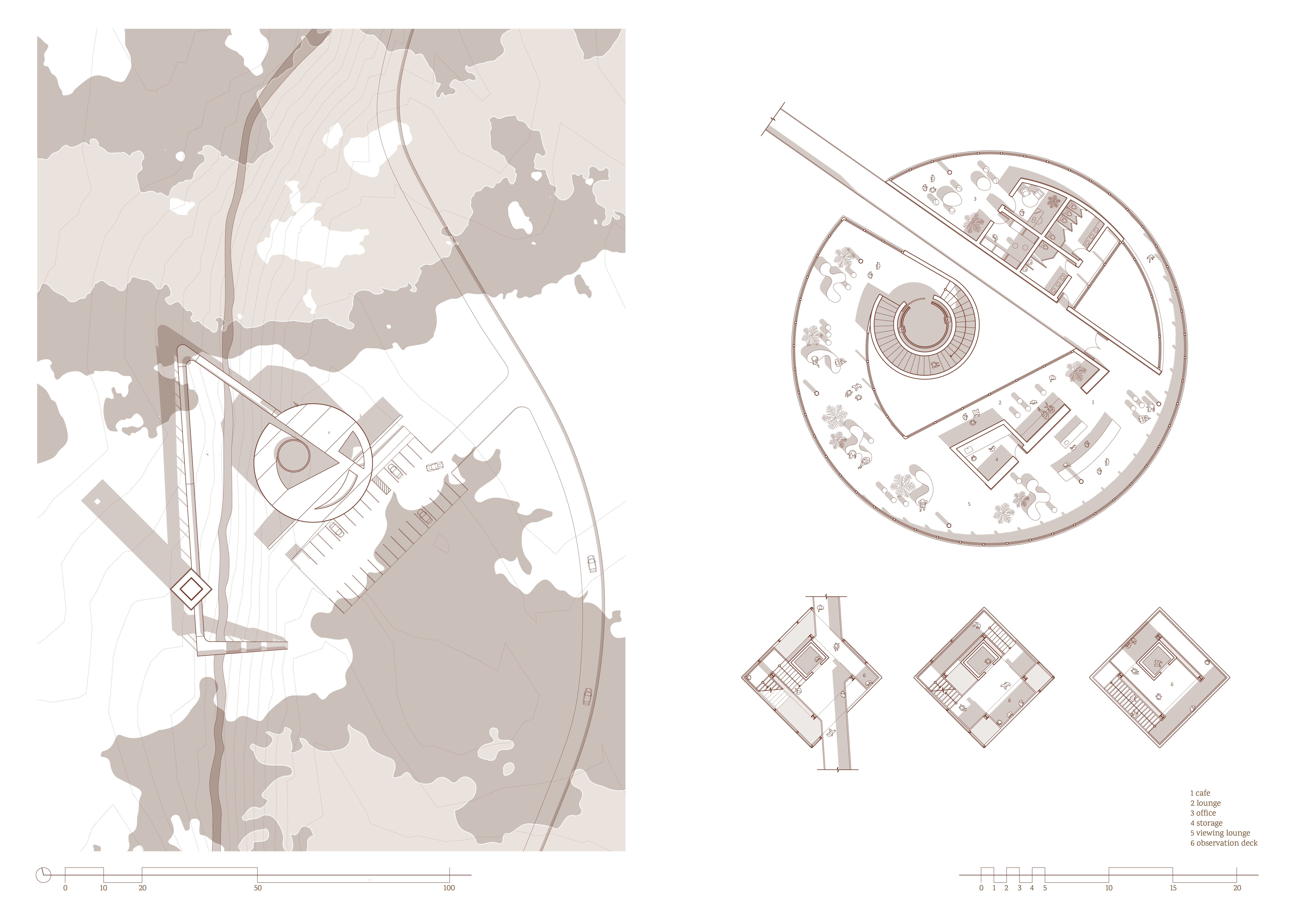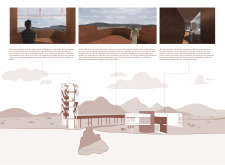5 key facts about this project
Design Intent and Functionality
The primary function of this architectural project is to serve as a promenade, guiding visitors through various spaces that blend public and private functions. Key areas include observation points, lounge spaces, and a café that anchor the user experience. The elongated wall that acts as a façade not only delineates spaces but also introduces a sense of enclosure while allowing for glimpses of the natural beauty that surrounds it. Visitors are invited to ascend through the building via an engaging ramp that enhances the spatial experience and promotes movement.
The observation tower is a significant feature, providing expansive views and reinforcing the relationship between the architectural design and its geographical context. By prioritizing movement, the project emphasizes a narrative that allows for exploration, encouraging users to engage with both the physical environment and the architectural elements throughout their journey.
Materiality and Constructive Approaches
The project employs three core materials: Corten steel, polycarbonate, and concrete. Corten steel, known for its durability and weathered appearance, is used in pathways and structural components, enhancing the visual connection with the rugged terrain. Polycarbonate panels provide a translucent façade that allows natural light to permeate interior spaces while maintaining privacy and energy efficiency. Concrete elements host structural integrity, creating a stark contrast with the warm hues of Corten steel and smooth surfaces of polycarbonate, resulting in a rich interplay of textures and temperatures.
What makes this project distinct is its harmonious integration with the landscape while showcasing a thoughtful approach to user experience. The design not only fulfills functional requirements but elevates the interaction between architecture and nature. The careful consideration of movement—how users traverse through different volumes and spaces—serves to deepen their relationship with the environment.
User Experience and Community Engagement
The integration of communal areas, such as lounges and a café, reflects a commitment to fostering social interaction. These zones encourage visitors to pause and engage, supporting community connectivity within the architectural framework. The design effectively blends solitude with social spaces, allowing for varying experiences depending on the users’ needs.
Through its innovative design strategies, "Point, Line, Plane, Volume" aligns architecture with environmental consciousness, promoting sustainable practices while meeting contemporary societal demands within the built environment. This steadfast focus on user experience, combined with a rigorous material investigation, provides a comprehensive response to geographical and social contexts.
For further insights into this project, including architectural plans, architectural sections, and detailed exploration of architectural designs and ideas, readers are encouraged to delve deeper into the project presentation to grasp the full depth of this architectural endeavor.


























